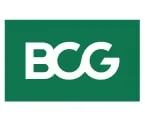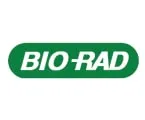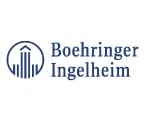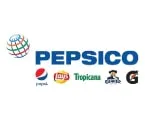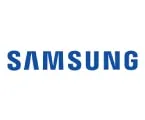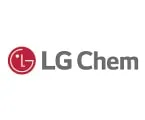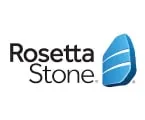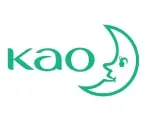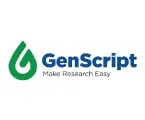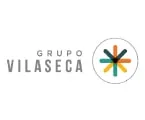The Postbiotics Market was valued at $14.82 million in 2024. This market is expected to reach $32.73 million by 2032 from an estimated $16.34 million in 2025, at a CAGR of 10.4% during the forecast period from 2025 to 2032.
Postbiotics Market Size & Forecast
The key factors driving the growth of this market are growing consumer awareness regarding the health benefits of postbiotic supplements, the increasing prevalence of various digestive diseases, and rising demand from the sports nutrition industry. Moreover, the growing use of postbiotics in pet food is expected to create lucrative opportunities for players operating in this market. However, stringent regulations related to postbiotics are expected to hinder the growth of this market to some extent.
Key Findings
- By Source: The Bacteria Segment to Dominate the Postbiotics Market in 2025
- By Form: In 2025, the Dry Postbiotcs Segment is Expected to Dominate the Postbiotics Market
- By Application: In 2025, the Dietary Supplements Segment is Expected to Account for the Largest Share of the Postbiotics Market
- By Sales Channel: In 2025, the Offline Sales Segment is Expected to Account for a Larger Share of the Postbiotics Market
- By Geography: North America Dominates the Postbiotics Market in 2025
Get focused insights within your budgets.
Personalize this report and get cost benefits!
Talk to Us
Postbiotics Market Growth Drivers
Rising Demand From the Sports Nutrition Industry Fuels the Growth of the Postbiotics Market
According to the National Collegiate Athletic Association (NCAA), more than 500,000 NCAA student-athletes compete in 24 sports each year in the U.S. Moreover, the number of sports professionals, athletic trainers, and fitness enthusiasts, such as marathoners and cyclists, and individuals who could benefit from postbiotic supplementation around the globe is significantly high. Various organizations around the world support sports programs. For instance, Special Olympics supports sports in more than 170 countries through its programs. It also supports 5 million athletes, 1 million coaches and volunteers, and more than 100,000 competitions annually.
Furthermore, the demand for dietary supplements and other sports nutrition products is increasing globally. According to the National Institutes of Health, athletes, especially elite athletes, are more likely to use dietary supplements and sports nutrition products to enhance their athletic performance compared to the general population.
As the number of athletic events worldwide is on the rise, athletes are encouraged to build physical strength by increasing their immunity. Postbiotic supplements provide essential nutrients required for a healthy lifestyle and body. The demand for postbiotics is expected to increase over the forecast period due to consumers’ increasing awareness of the importance of maintaining excellent digestive health. As a result, postbiotics are expected to gain popularity globally.
Some people who exercise a lot may experience gastrointestinal problems such as stomach discomfort, due to blood being diverted from the gut to the working muscles. Certain sports nutrition products can cause health problems. Although sports nutrition products are a convenient way to feed essential nutrients to the body, the high concentration of nutrients may cause undesirable effects. However, some sports nutrition products containing postbiotics can aid digestion.
Thus, the rising demand for postbiotics in the sports nutrition industry is expected to drive the growth of this market.
Postbiotics Market Growth Trends
Increased Adoption of Postbiotics in Functional Foods and Beverages
Postbiotics are non-viable, bioactive compounds produced by probiotics or other microorganisms during fermentation. Unlike live probiotics, postbiotics offer similar health benefits without the need for viable bacteria, making them more stable and easier to incorporate into various food products. This feature is particularly appealing to both manufacturers and consumers, as it ensures the effectiveness and longevity of the product without concerns over bacterial viability.
The growing consumer demand for functional foods—those offering specific health benefits beyond basic nutrition—has significantly contributed to the rise of postbiotics. Health-conscious consumers are increasingly seeking foods and beverages that support gut health, immune function, and overall well-being. Postbiotics, with their ability to enhance digestion, promote immunity, and reduce inflammation, fit seamlessly into this demand.
The rise in plant-based diets, clean-label products, and the preference for natural ingredients further accelerates postbiotics’ adoption in functional foods and beverages. Ingredients such as fermented dairy, plant-based beverages, snacks, and protein bars are incorporating postbiotics to enhance their health benefits. This shift reflects a broader trend toward personalized nutrition, where consumers seek products that cater to their individual health needs.
As research continues to uncover the health benefits of postbiotics, their role in functional foods and beverages is expected to expand. They offer an innovative, stable, and natural alternative to traditional probiotics, positioning them as a key ingredient in the future of functional nutrition.
Postbiotics Market Analysis: Top Market Opportunity
By Source: The Bacteria Segment to Dominate the Postbiotics Market in 2025
Based on source, the postbiotics market is segmented into bacteria and yeast. In 2025, the bacteria segment is expected to account for a larger share of the global postbiotics market. The large market share of this segment is attributed to the use of bacteria-based postbiotics in a wide variety of commercial dairy products, such as sour and fresh milk, yogurt, and cheese, among others. The growth of this segment is fueled by the increasing prevalence of gastrointestinal and extraintestinal disorders, including traveler's diarrhea, antibiotic-associated diarrhea, inflammatory bowel diseases, protection against intestinal infections, and irritable bowel syndrome; awareness of nutrient-dense food products; and a growing preference among health-conscious consumers for these products.
By Type: The Bacterial Lysates and Cell Fragments Segment Projected to Register the Highest CAGR During the Forecast Period.
Based on type, the postbiotics market is segmented into bacterial lysates and cell fragments, inactivated probiotics, short-chain fatty acids (SCFAs), exopolysaccharides, enzymes, and other metabolites. The bacterial lysates and cell fragments segment is poised to record the highest CAGR during the forecast period. The high growth of this segment is mainly due to its broad functional versatility and rising use in both human and animal health. These postbiotics consist of cell wall components like peptidoglycans, lipoteichoic acids, and membrane proteins that can modulate immune responses, improve metabolic activity, and support skin and gut health. They're increasingly featured in cosmetics, respiratory health supplements, and immune-enhancing formulations, especially in regions with strong consumer demand for natural, clinically supported solutions. Their application potential across multiple sectors — from dermatology to dietary supplements and veterinary nutrition — makes this segment the innovation frontier within the postbiotics space.
By Form: The Dry Postbiotics Segment to Dominate the Postbiotics Market in 2025
Based on the form, the postbiotics market is segmented into dry and liquid postbiotics. In 2025, the dry postbiotics segment is expected to account for a larger share of the postbiotics market. The rapid growth of this segment is driven by the growing use of postbiotic ingredients in postbiotic supplements, which are majorly available in tablet, capsule, and powder forms. Moreover, solid dry postbiotics have a longer shelf life and are easy to handle & transport, which makes them more convenient for use in various application areas. In addition, solid postbiotics offer advantages such as ease of use, an inexpensive nature, and the ability to avoid costly formulation mistakes and maintain the stability of the ingredient functionality until it is utilized.
By Application: The Dietary Supplements Segment to Dominate the Postbiotics Market in 2025
Based on application, the postbiotics market is primarily segmented into dietary supplements, functional food & beverages, pharmaceuticals, cosmetics & personal care, animal nutrition, and infant nutrition. In 2025, the dietary supplements segment is expected to account for the largest share of the global postbiotics market. The large market share of this segment is attributed to the high prevalence of digestive health issues and increased customer understanding of maintaining good gut health. As consumers continue to seek effective, science-driven health solutions, postbiotics are becoming a go-to ingredient in next-generation supplements aimed at holistic wellness.
However, the cosmetics & personal care segment is projected to register the highest CAGR during the forecast period, owing to the increasing interest in the skin microbiome and biotech-based skincare. Postbiotics have shown potential in enhancing skin barrier function, reducing inflammation, balancing pH levels, and even offering anti-aging benefits. Consumers are increasingly seeking microbiome-friendly products that extend beyond surface-level treatments.
By Sales Channel: The Offline Segment to Dominate the Postbiotics Market in 2025
Based on the sales channel, the postbiotics market is segmented into offline and online. In 2025, the offline segment is expected to account for a larger share of the global postbiotics market. The factors contributing to the large market share of this segment are the advantages of offline sales, such as personalized attention from the sales staff, no waiting for delivery, and enhanced customer satisfaction.
Geographical Analysis
Asia-Pacific: Fastest-Growing Regional Market
Based on geography, the postbiotics market is segmented into North America, Europe, Asia-Pacific, Latin America, and the Middle East & Africa. In 2022, North America is expected to account for the largest share of the global postbiotics market, followed by the Asia-Pacific and Europe. The large share of this market is attributed to the rising digestive health products, the growing supplements demand, and the increasing demand for postbiotics.
However, Asia-Pacific is slated to register the highest CAGR during the forecast period due to the rising availability of postbiotic ingredients for applications in various areas, including dietary supplements and food & beverages, increasing consumer awareness about digestive health and benefits of postbiotics, increasing use of postbiotic supplements for various therapeutic purposes, and rising innovations in postbiotic formulations.
Key Players
The report offers a competitive analysis based on an extensive assessment of the leading players’ product portfolios and geographic presence and the key growth strategies adopted by them over the past four years. Some of the key players operating in the postbiotics market are Archer-Daniels-Midland Company (U.S.), Cargill, Incorporated (U.S.), DSM-Firmenich AG (Switzerland), Sabinsa Corporation (U.S.), Postbiotica S.r.l. (Italy), Phileo by Lesaffre (France), Lactobio A/S (Denmark), MCLS Europe (Netherlands), and AB-BIOTICS, S.A. (Spain).
Postbiotics Industry Overview: Latest Developments from Key Industry Players
- In February 2024, Kerry Group launched Plenibiotic, a new rice-derived postbiotic ingredient derived from Lactobacillus casei subsp. 327, formulated to improve digestive and skin health.
- In October 2023, Tetra Pak collaborated with AB Biotek Human Nutrition & Health to launch a range of postbiotic food solutions. These can be integrated into food processing as a powder at the mixing stage of Ultra High Temperature (UHT) products, like beverages, dairy products, ice cream, and cheese.
Need data on specific countries or regions?
Customize this report for countries of interest.
Postbiotics Market Research Summary
|
Particulars
|
Details
|
|
Number of Pages
|
132
|
|
Format
|
PDF
|
|
Forecast Period
|
2025–2032
|
|
Base Year
|
2024
|
|
CAGR (Value)
|
10.4%
|
|
Market Size (Value) in 2025
|
USD 16.34 Million
|
|
Market Size (Value) in 2032
|
USD 32.73 Million
|
|
Segments Covered
|
By Source
By Type
- Bacterial Lysates and Cell Fragments
- Inactivated Probiotics
- Short-chain Fatty Acids (SCFAs)
- Exopolysaccharides
- Enzymes
- Other Metabolites
By Form
By Application
- Dietary Supplements
- Functional Food & Beverages
- Pharmaceuticals
- Cosmetics & Personal Care
- Animal Nutrition
- Infant Nutrition
By Sales Channel
- Offline Sales
- Online Sales
|
|
Countries Covered
|
North America (U.S., Canada), Europe (Germany, France, U.K., Italy, Spain, and Rest of Europe), Asia-Pacific (China, India, Japan, Australia, South Korea, and Rest of Asia-Pacific), Latin America, and the Middle East & Africa.
|
|
Key Companies
|
Archer-Daniels-Midland Company (U.S.), Cargill, Incorporated (U.S.), DSM-Firmenich AG (Switzerland), Sabinsa Corporation (U.S.), Postbiotica S.r.l. (Italy), Phileo by Lesaffre (France), Lactobio A/S (Denmark), MCLS Europe (Netherlands), and AB-BIOTICS, S.A. (Spain).
|
Key questions answered in the postbiotics market report:


